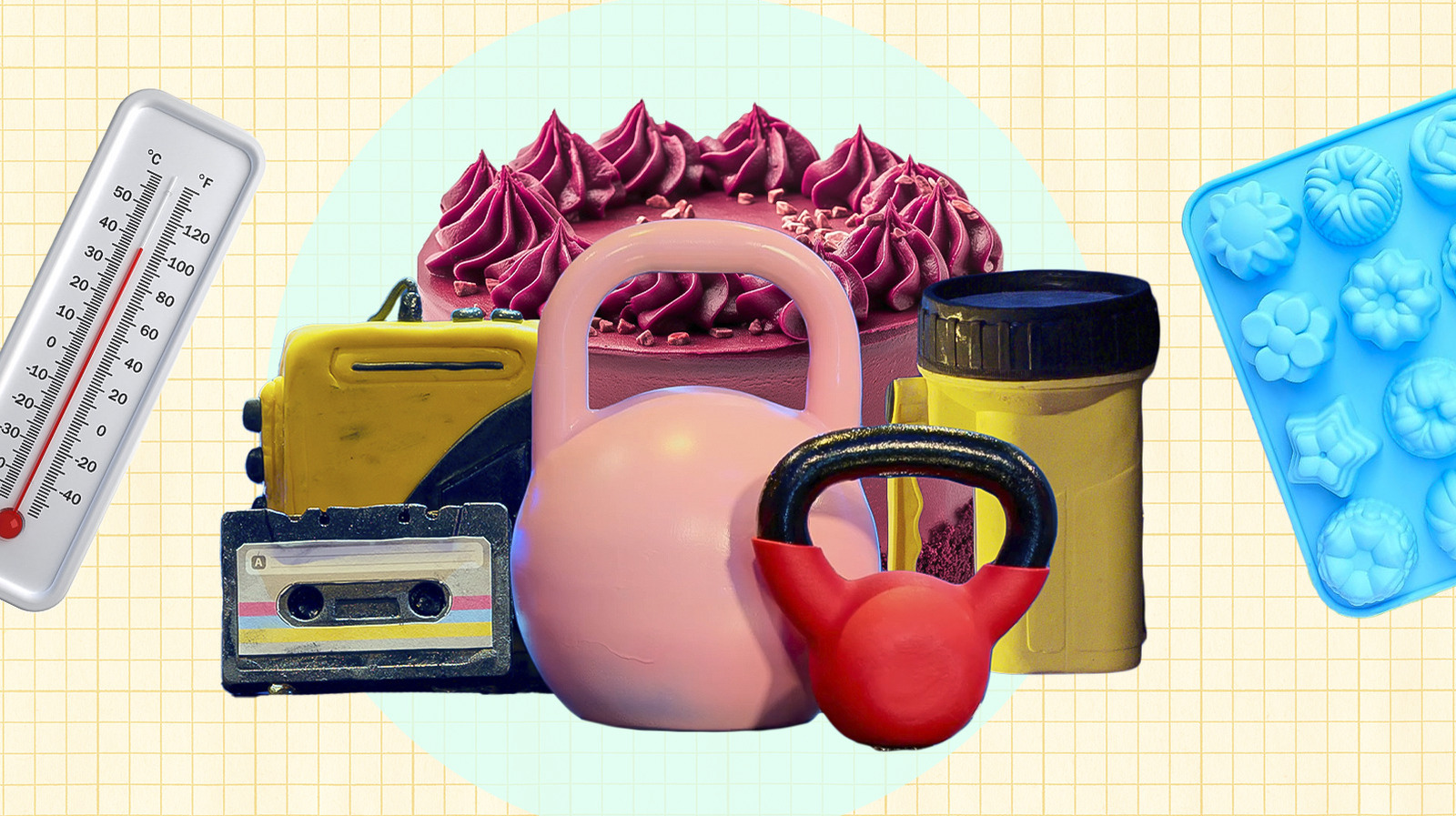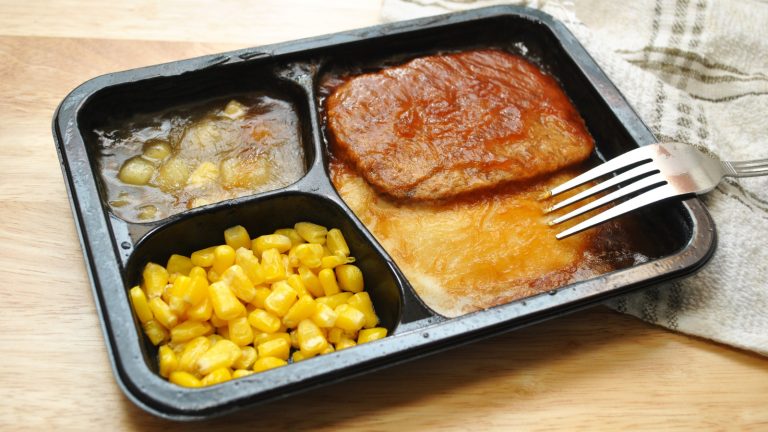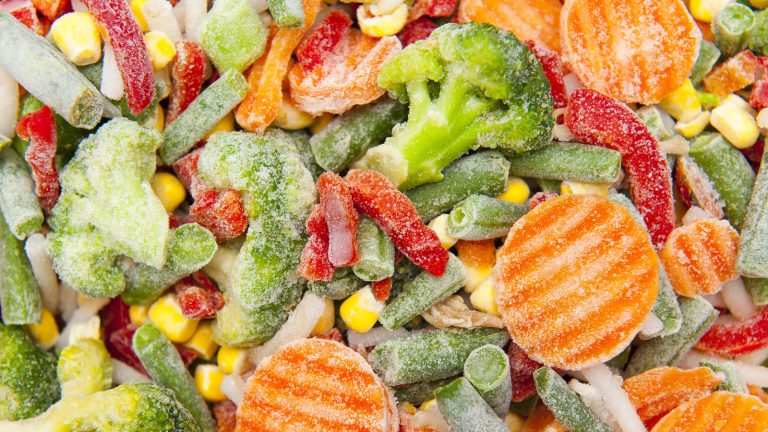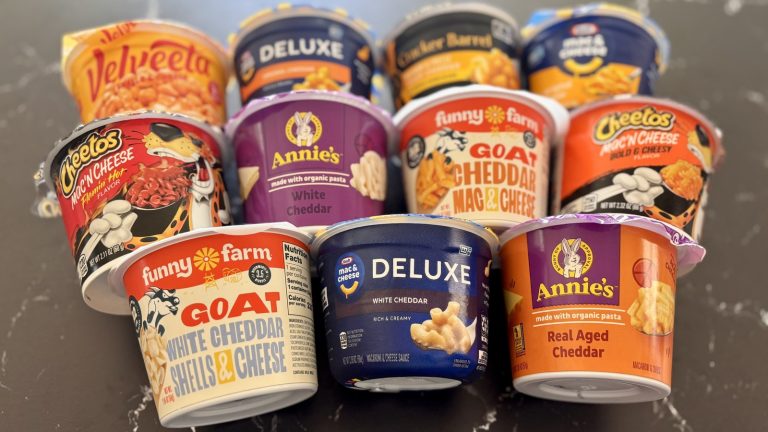If you’ve ever watched Netflix’s “Is It Cake?,” you’d know that the show is more than optical illusions and meme-able gimmicks. Behind the jaw-dropping hyper-real cakes is some serious baking expertise. Contestants don’t merely carve sneakers and fast food replicas — they also bake cakes that hold their structure, stay moist, and taste as good as they look.
And while the camera is prone to notice design and drama, there are a few basic baking hacks that contestants consistently employ to build their edible masterpieces. These tips won’t land you on TV, but they’ll sure take your home-baking abilities to the next level. Whether you’re making a simple layer cake or trying your hand at something more elaborate, there are some small tweaks that can make a big difference in texture, flavor, and presentation. Some are classic pro tricks, while others are more behind-the-scenes habits that become second nature with experience. Either way, they’re all part of what makes “Is It Cake?” contestants stand out in the kitchen. So, before you reach for the fondant or start layer-stacking, get your basics right. Here are 12 tips from the “Is It Cake?” kitchen — no sculpting skills required.
Sift your dry ingredients
It might feel like an extra step, but sifting your flour, cocoa powder, baking powder, and other dry ingredients is the secret to an even, fluffy crumb. In “Is It Cake?,” where structure and uniformity matter more than ever, this step can make or break the final product. Nearly every episode of the Netflix original opens with contestants sifting their dry concoctions of flour, baking soda, powder, and sometimes cocoa before moving forward with mixing anything with their ingredients for the batter. Sifting breaks up any clumps and aerates the mixture, which allows it to mix evenly with the wet ingredients. This leads to a more tender cake that cooks evenly all the way through — something you’ll appreciate whether you’re carving it into a handbag or just slicing it for dessert. In season 1, episode 4, contestant Steve Weiss sifts his dry ingredients before molding a cake fashioned to look like a tray of fresh produce.
Sifting is especially important if you’re working with ingredients that clump easily, like cocoa powder or powdered sugar. Doing this also gets leavening agents like baking soda and baking powder evenly distributed throughout your dry ingredients, so that you don’t end up with spots of bitterness or uneven rise. In short, it’s one of those “Do it once, thank yourself forever” kind of habits. If you lack a sifter, a fine mesh strainer will do. Just gently shake the ingredients through into your mixing bowl, and you’ll be rewarded with a smoother texture and more consistent flavor throughout. Even the most complex cake needs a solid foundation, and sifting is where that foundation starts.
Use simple syrup
Want a foolproof way to keep your cake moist and flavorful? Simple syrup is your new best friend. On “Is It Cake?,” where cakes sit for hours while they’re being decorated and carved, bakers rely on a thin layer of simple syrup to keep the layers from drying out. It’s a mixture of equal parts water and sugar, simmered until the sugar dissolves. After, simply brush the liquid onto the cake once it’s cooled slightly. On episode 6 of the first season, we see all three contestants practice a variation of this technique. Instead of simple syrup, the contestants spooned on thin jams to top each layer of cake, which can help add some dimension in addition to moisture.
Simple syrup doesn’t just preserve moisture — it subtly boosts sweetness and can even be flavored with extracts, citrus, or liqueurs to complement your cake. It’s especially helpful if your cake needs to sit overnight or if you’re stacking multiple layers. That added hydration makes the cake taste just as fresh the next day, and gives it a soft, melt-in-your-mouth feel.
Just don’t overdo it. A light brush is plenty since too much can make your cake soggy or hard to frost. Use a pastry brush or squeeze bottle to apply the syrup evenly. You’ll notice the difference both in texture and in how well your cake holds up during decorating.
So whether you’re baking for a special occasion or just perfecting your technique, remember: a little syrup goes a long way. It’s a subtle but powerful upgrade.
Don’t overmix
Overmixing is a common baking mistake, even among professional bakers. On “Is It Cake?,” the competitors are working against the clock, but they’re intelligent enough not to overmix their batter. Why? Because overmixing encourages the formation of gluten, which leads to tough, dense, and cracked cakes. But on the other hand, working your batter for an extra couple of minutes can add some density to your base. Steve Weiss mentions this in episode 4 of the first season whilst mixing his batter. He informs us of both his desire to maintain a more dense cake for the challenge and the fact that a dense cake is easier to carve.
Gluten gives bread chewiness, which can be a good or bad thing. Once you incorporate your dry ingredients into your wet ingredients, you just mix until they’re combined. You don’t want to have a smooth batter. It’s all right if there are a few streaks of flour present; they’ll disappear during baking. The more you mix, the more you create structure — and that structure is at the expense of softness.
If you’re using a stand mixer, be extra cautious. Mix on low and turn it off the instant it seems to be folded in. It’s safer to finish folding by hand with a spatula than to chance overmixing by a few more paddle turns.
This is especially the case for cakes that have a fine crumb or soft texture, like sponge or butter cakes. The lighter you want the finished product to be, the more carefully you must mix. So relax, and trust that less is more.
Keep a close eye on baking time
In baking, time is of the essence. Even the most flawless batter can turn out a dry disaster if it’s left to bake for too long. On “Is It Cake?,” accuracy is particularly necessary to avoid overbaking because the contestants rely on the cake’s internal moisture to hold its shape when carved and decorated. Beyond that, the contestants are given eight hours to complete their complex structures, so time is of the essence, and timers are always pinging.
Start testing your cake a few minutes short of when the recipe says it’s done. Look for signs: a golden brown on top, edges that have pulled away from the pan, and a toothpick or skewer that, when inserted, has only a few crumbs (not wet batter). Remember that cakes will continue to cook from residual heat after they are removed from the oven. Taking it a bit short may actually yield a moister result once it has cooled.
Also, get to know your oven. Many run hotter or cooler than the set temperature, and the location of your pan (top vs. middle rack) can change how evenly it bakes. An oven thermometer is a small investment that pays off big over time.
Dry cake cannot be saved, no matter how much frosting or syrup you drizzle on it. So when in doubt, hover nearby and trust your gut feeling. The sunlight filtering through the window, the smell, the delicate spring of the surface — all of these tell you when your cake is best.
Use every tool
When it comes to cake decorating, your tools are as crucial as your level of expertise. On “Is It Cake?,” bakers don’t simply use a spatula and piping bag, but also scalpels, miniature brushes, tweezers, and even sculpting tools to capture the smallest details. These instruments offer precision and control for cleaner lines, smoother textures, and more authentic finishes. Contestants use scissors to snip the tops of asparagus-shaped cakes, cake spatulas to sharpen the edges of a chessboard-shaped cake, craft knives to carve out detailed shapes from icing … You get the idea.
Scalpel blades and craft knives are especially useful for the edges of objects, or making surface cuts, while fine-bristled brushes are perfect for dusting foods with edible dust or coloring food with paint. Offset spatulas will smoothly spread the icing without touching delicate items, and flexible tools with a silicone tip make smoothing out fondant and sculpting modeling chocolate much simpler.
You don’t need a studio full of gadgets to get started, but invest a little in some good specialty tools, and it will give that professional, polished look to your cakes. And when you see how much neater and more streamlined your decorating is, you’ll never know how you made do with a butter knife.
Diversify with modeling chocolate
One standout trend on “Is It Cake?” is how often bakers reach for modeling chocolate over the classic option of fondant. Modeling chocolate is more pliable, less prone to cracking, and easier to sculpt into detailed shapes. For fine details, modeling chocolate offers unmatched control and precision for things like laces on sneakers or the ridges on a burger bun. In the season 1 finale, Andrew Fuller specifically used modeling chocolate to mimic the wrapped leather of a briefcase, specifically citing how forgiving it is when building texture and seams.
Unlike fondant, which can dry out or tear if overworked, modeling chocolate responds well to body heat and can be smoothed seamlessly with your fingers or tools. It also tastes better to most people, which helps if your guests want to eat the decorations instead of peeling them off.
The trick is knowing when to use it. Modeling chocolate is ideal for intricate work that needs to hold shape but still stay somewhat flexible. Use it to sculpt elements like flowers, zippers, or fabric folds (draping effects of any kind). You can even go the extra mile to mix it with fondant to create a hybrid that’s stronger and more malleable for those complex shapes that need extra hold. Keeping modeling chocolate in your rotation expands what your cakes can do and how real they can look.
Silicone molds save time
For reproducing complex patterns — buttons, textures, or logos, for example — silicone molds are your friend. “Is It Cake?” competitors like to use them to save time without sacrificing quality or consistency. Hand-fashioning every single buckle or tile is time-consuming and invites inconsistency; molds get you the same thing every time. On the show, you’ll see silicone molds poured with chocolate to build everything from the prickly skin of cactus fruit to a bowling pin. The streamlining of tasks it provides allows them to focus more time on painting and texturizing their builds.
Silicone is flexible, food-safe, and easy to clean. You can press fondant, modeling chocolate, or even isomalt into it for varied effects. And you don’t need to buy dozens of specialty molds — many bakers make their own using mold kits that conform to the shape of any object.
Consistency is most crucial when creating cakes that are meant to trick the eye. If your repeating elements vary too much in terms of size or shape, the illusion is lost. A mold ensures that each detail is crisp, clean, and exactly like the last.
Support your cake
Gravity is not kind to a cake shaped like a bowling pin, a shoe-shaped cake with high tops, or a lawn flamingo-shaped cake. “Is It Cake?” bakers sometimes make tall and dramatic, or small and detailed cakes by stacking several varied layers, then sculpting them into realistic shapes. But without some structural support, even the most beautiful cake ever made will sag, lean, or fall over from its own weight. One of the most formidable instances of the use of molds was in episode 7 of the first season, when Hemu Basu used intricate, handmade molds to craft the body of a toy elephant.
That is where structural support enters the picture. Rods, cake boards, and dowels are the internal skeletons of these display items. They provide the weight of the cake with an even distribution and make sure that layers won’t settle into each other — a very crucial consideration if your cake will be standing for hours or might travel in one piece.
A center support rod is necessary for high cakes. It keeps everything in place and prevents movement during transportation. Smaller dowels must be placed under each tier, especially when cakes are heavy or high. For carved or 3D cakes, an internal structure gives stability because you are carving away at the exterior. These internal utilities aren’t visible to the untrained eye, but they’re the foundation of any good cake illusion. Without them, gravity wins every time.
Even the most inventive sugar work, flawless fondant, or beautifully painted details won’t be worth it if your cake flops over before unveiling. Think of supports as a quiet insurance policy, one that lets you focus on design, detail, and drama without concern of a structural meltdown. A well-supported cake is both secure and stage-worthy.
Temperature is key
One of the most underestimated variables in cake decorating is temperature. Contestants are monitoring oven temps whilst managing the temperature of everything they touch, from kneading fondant, to whipping buttercream, to the cake itself. You’ll constantly see them briefly popping items into the fridge to chill and seize up before working. And with good reason: Temperature can make or break your bake, especially when sculpting something elaborate.
Fondant that’s too warm becomes sticky, tears easily, and clings to surfaces in all the wrong ways. On the flip side, fondant that’s too cold stiffens and loses flexibility, making it prone to cracking. Buttercream that’s too cold is difficult to spread and won’t achieve that silky smooth finish, while overly warm buttercream melts on contact and slides right off the cake. Modeling chocolate presents its own challenges, too. It needs to be just soft enough to shape, but firm enough to hold detailed designs. Not too warm because it droops. Not too cold because it snaps.
Even the cake itself needs to be handled at precisely the right temperature. Warm cakes melt icing and slide during stacking. Cakes that are too cold will sweat as they come up to room temperature, causing moisture to accumulate under fondant or buttercream.
Room temperature may be the easiest default for you, but operating in a cold environment works best if your hands run naturally warm. Chill cakes before carving, and leave icings at room temperature to soften slightly before whipping. Be sure to give each component time to acclimate. By having temperature under control, you set the stage for structural integrity, clean lines, and professional-quality results.
Use real objects as a reference
Hyper-realistic cake creation requires a sharp eye — and nothing is sharper than a real-world example. Every contestant on the show studies the real objects carefully, measuring angles, noting textures, and studying the way light interacts with surfaces. This is the secret to taking a good concept and making it into an eerily precise cake copy.
Whether you’re trying to mimic a sneaker, a handbag, or a fast-food meal, having the actual object in front of you — or a high-resolution image — provides crucial visual data. You’ll notice small but important details: the depth of stitching, the shine on plastic, the placement of logos. These nuances are what sell the illusion.
Even if you’re not tracing something you notice on a daily basis, reference images can guide your design. Saw a lovely cake on Instagram? Take a screenshot. Stumbled upon a flea market ceramic vase that’s inspiring you? Take a picture. These references ground your look, especially when you’re playing with layers of color, form, and texture.
The key is to observe, not just replicate. Reference images are not templates — they are guides to help inspire accuracy, push your creative boundaries, and ensure consistency in your performance. Relying on memory will tend to lead to guesses and inconsistency. Having a reference is like having a visual checklist handy.
Use edible art techniques
If you really wish to blur dessert and deceit, then edible art is the key. Artists on the gameshow rely on a range of food-grade paint, gloss, powder, and gel to craft depth, glaze, and realism in their works. Such products can replicate anything from metal finish to wood grain, plastic sheen, even condensation on a soda can. Season 1, episode 4’s raw steak-cake is a vivid reminder of the extreme possibilities made possible by edible art in cake crafting.
Edible paint allows for detailed brushwork and shading to give fondant and modeling chocolate dimension and personality. Need to replicate a denim fabric? Dry-brush dark shades into the seams. Replacing a shiny vinyl handbag? Apply a light layer of edible gloss for that real reflective shine.
Dusts and gels also play a role in capturing realism. Use edible dust to build edges, create depth in shadows, or add metallic sheen. Gels can be applied to create a wet, freshly-polished appearance or transparency — ideal for such things as glass or candy fragments.
The beauty of edible art is the freedom it offers. You’re not limited to just sculpting or piping — you can paint, highlight, stain, and glaze your cake as if it were a canvas. And unlike in traditional baking, a little messiness can add to the realism. If your cake is a skeleton, edible art is the skin. It’s the final covering that makes a fantastic design a work of art.





